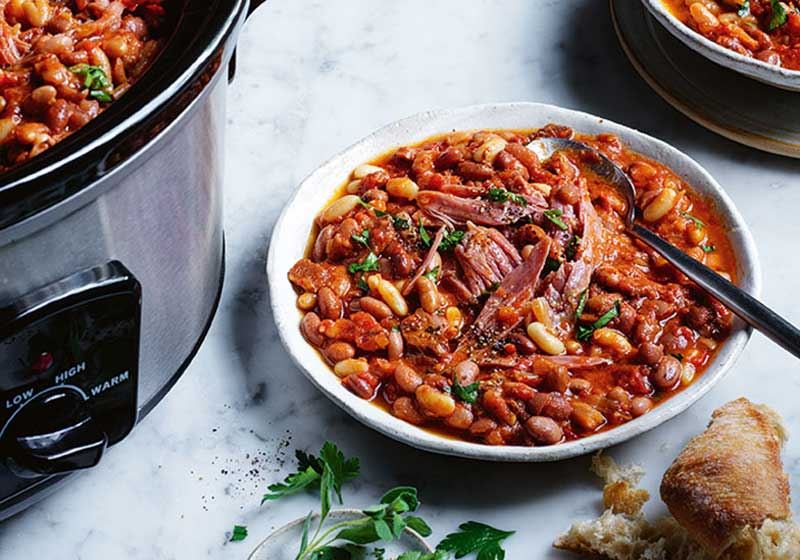By Leigh O’Connor.
While it took her a while to realise it, loving food has been a constant in Erin Alderson’s life.
She would help her Grandfather in the garden, her Great-aunt made sure she knew how good butter could be and Erin owes her adoration of spices to her Mum.
Now a writer, recipe developer and photographer, Erin offers vegetarian recipes that harness the bounty of Californian produce and celebrate the state’s diverse cuisine. Her third cookbook, ‘The Yearlong Pantry’, is a vegetarian guide to grains, legumes, nuts and seeds that teaches readers to transform their home pantry, learn to buy, store and cook and savour basic staples.

"My relationship with food was affected by two events during my college years. My father had a heart attack at the age of forty-five and my Grandmother bluntly confronted me about my path towards diabetes,” Erin explains.
"Up until that point, I aspired to be healthier (code for thinner in the diet culture of the 90s) yet never seemed to be motivated (a fact I can now trace back to ADHD). So, I started to cook for myself, often on a hot plate in my dorm. I became obsessed with food but less in ‘it’s so delicious’ way and more in a calorie-counting way. I ended up building my relationship with food on a weak foundation.”
Eventually growing out of that mindset, Erin channelled her energy into a food blog in the mid-aughts – Naturally Ella – as a way to document her exploration of food which lasted until 2020.

"By that time, I had constructed a whole career in food through recipe development and photography. 'Naturally Ella' had become a destination for vegetarian recipes.”
Erin spent the better part of 15 years exploring and learning how the ingredients in her latest book could be used to create an endless number of meals. She strives to make food that inspires, whether you are cooking big batches of beans at the beginning of the week and reimaging them every few days, or starting with a can from the grocery store.
‘The Yearlong Pantry’ is an excellent resource for bringing these staples to life. Organised by ingredients, each section of the book begins with background information, cooking charts and methods; moving onto stunning recipes that make the book both a timeless reference and a fun refresh for anyone looking to add new flourishes to pantry staples.
We have three recipes for you to recreate at home:
"I am a person with many hobbies that revolve around food, primarily because I realised that with a little research and practice, I could make the meals I loved most. It seems only natural that I would fall in love with making pizza at home. I’m able to combine my love of vegetables, cooking with fire and playing with grains all into one meal,” Erin says.

"This same-day pizza dough is a riff on a recipe from Flour Water Salt Yeast by Ken Forkish that I’ve been making for years. I’ve tested it time and again with varying levels of wheat flour, sifted and unsifted. While I’ve been known to make 100% whole wheat versions, this dough is a good introduction for those who might not be as comfortable working with whole wheat flour.”
The dough recipe will leave you with enough for two more pizzas to top as you please or save for later. You can also triple the sauce and toppings if everyone in your house wants to eat the same pizza.
Seasonal variations:
"In California, I can grow scallions mostly year-round and their fresh mild flavour can work with a wide array of vegetables, such as thinly sliced zucchini or sweet corn kernels in Summer and shredded greens or Brussels sprouts during the cooler months.
Make ahead:
The pizza dough can be made ahead and refrigerated for up to 48 hours or frozen for up to 3 months and thawed in the refrigerator before using. Scallion sauce can also be made ahead and stored in the refrigerator for a few days.
"Upon moving to California, I was often asked if I had been to In-N-Out and if so, what I thought. This California-based fast-food restaurant is known for its limited menu of thin, crispy-edged burgers piled with cheese, lettuce, tomatoes and a special sauce (which is a variation on Thousand Island dressing). Here, I give black beans a similar treatment of thin patties smashed onto a skillet to create those iconic crispy edges.

"I’ll be up-front: these patties will fall apart. I think it’s part of their charm. However, there are a few tricks to helping them stay together. First, don’t get overconfident and make larger patties; they will let you down upon flipping. Smaller patties are key. Also, don’t rush the process, the patty should have some crispy edges forming before you attempt the flip.”
Make ahead:
The patties can be frozen and kept for up to 3 months. To do this, sandwich each ball in between pieces of parchment and press down to form the patty. Freeze like this and when you ready to use it, peel off the parchment and place the patty in a hot skillet. The dressing will last up to a week in the refrigerator.
"Dukkah is, in my mind, the perfect showcase of blending nuts and spices together to achieve texture and flavour. This Egyptian condiment is often made with hazelnuts and almonds as the base, but my house blend favours the slight piney flavour of the pistachios with the floral coriander, earthy cumin and fennel seeds.

Erin says dukkah can be sprinkled on everything: salads, grain bowls, roasted vegetables and savoury yogurt bowls, to name a few.
Seasonal variations:
"I recommend keeping the vegetables light to not overpower the flavour of the dukkah. For the Summer months, go with grilled eggplant or tomato wedges tossed in a bit of olive oil. For the cooler months, I like snap peas and roasted cabbage.”
Whether it’s your first time cooking with beans and not sure when to add salt, or you are a dry goods aficionado and already know your favourite heirloom varietals, ‘The Yearlong Pantry’ will guide you from pantry to plate with delicious results.







